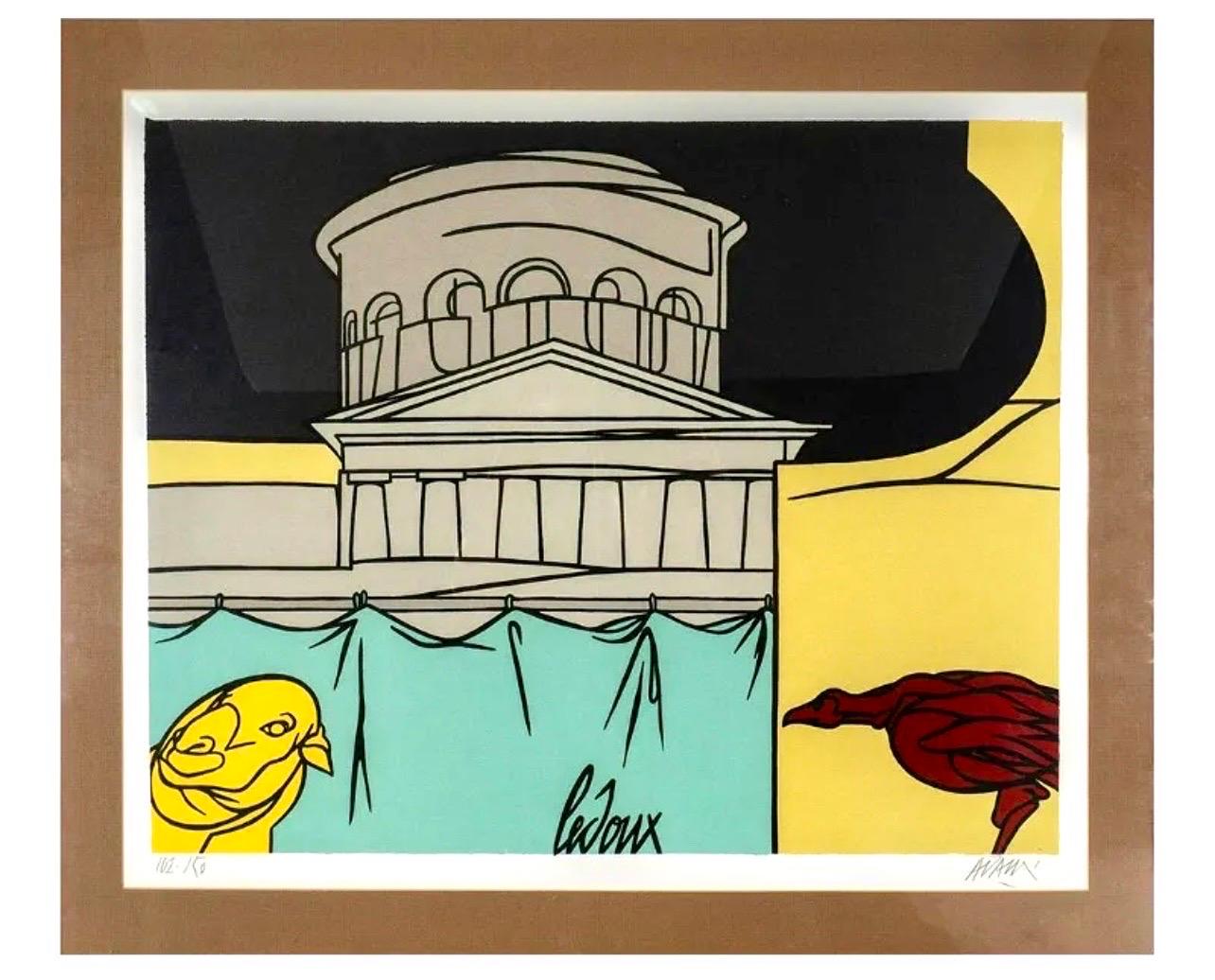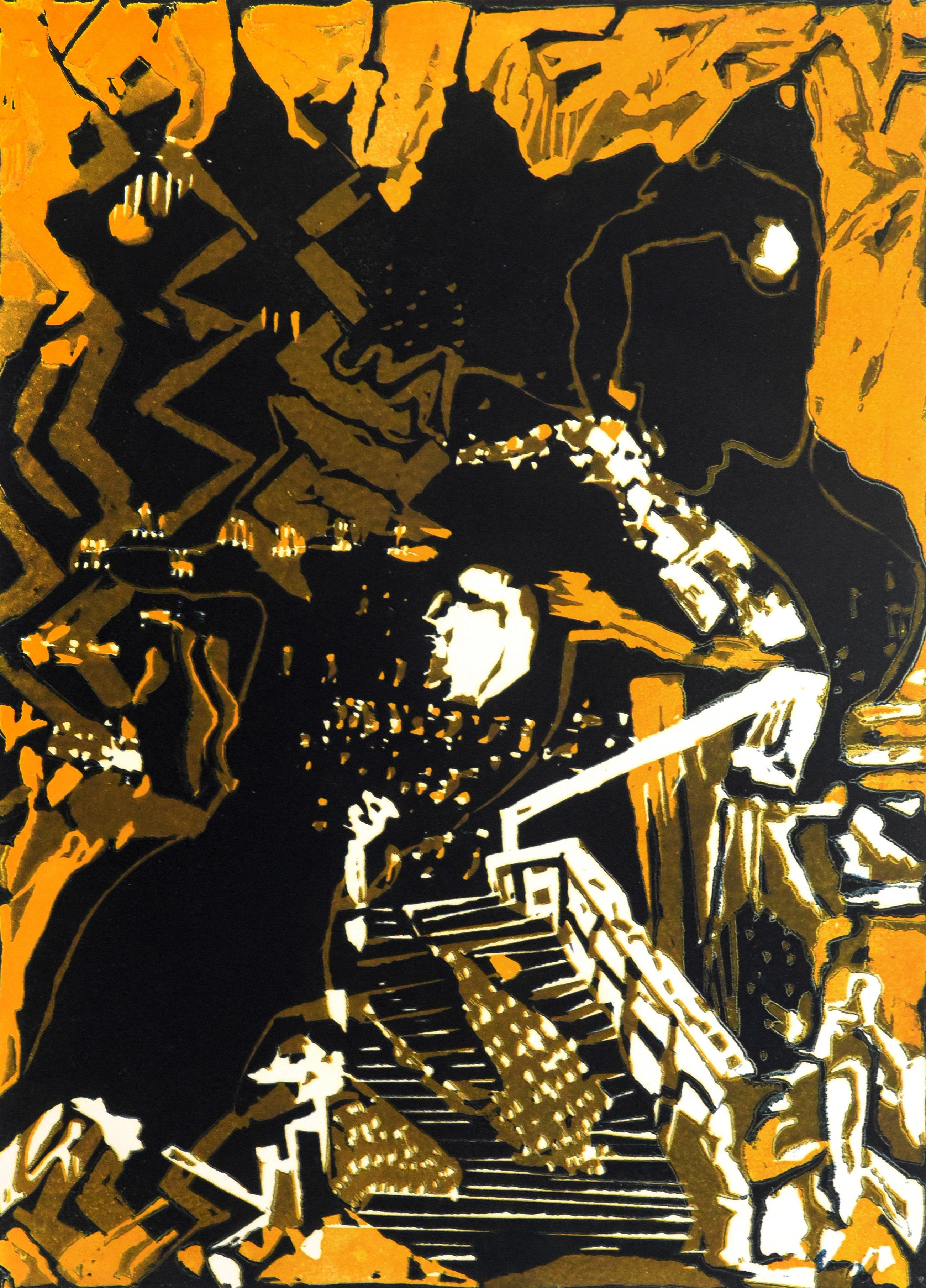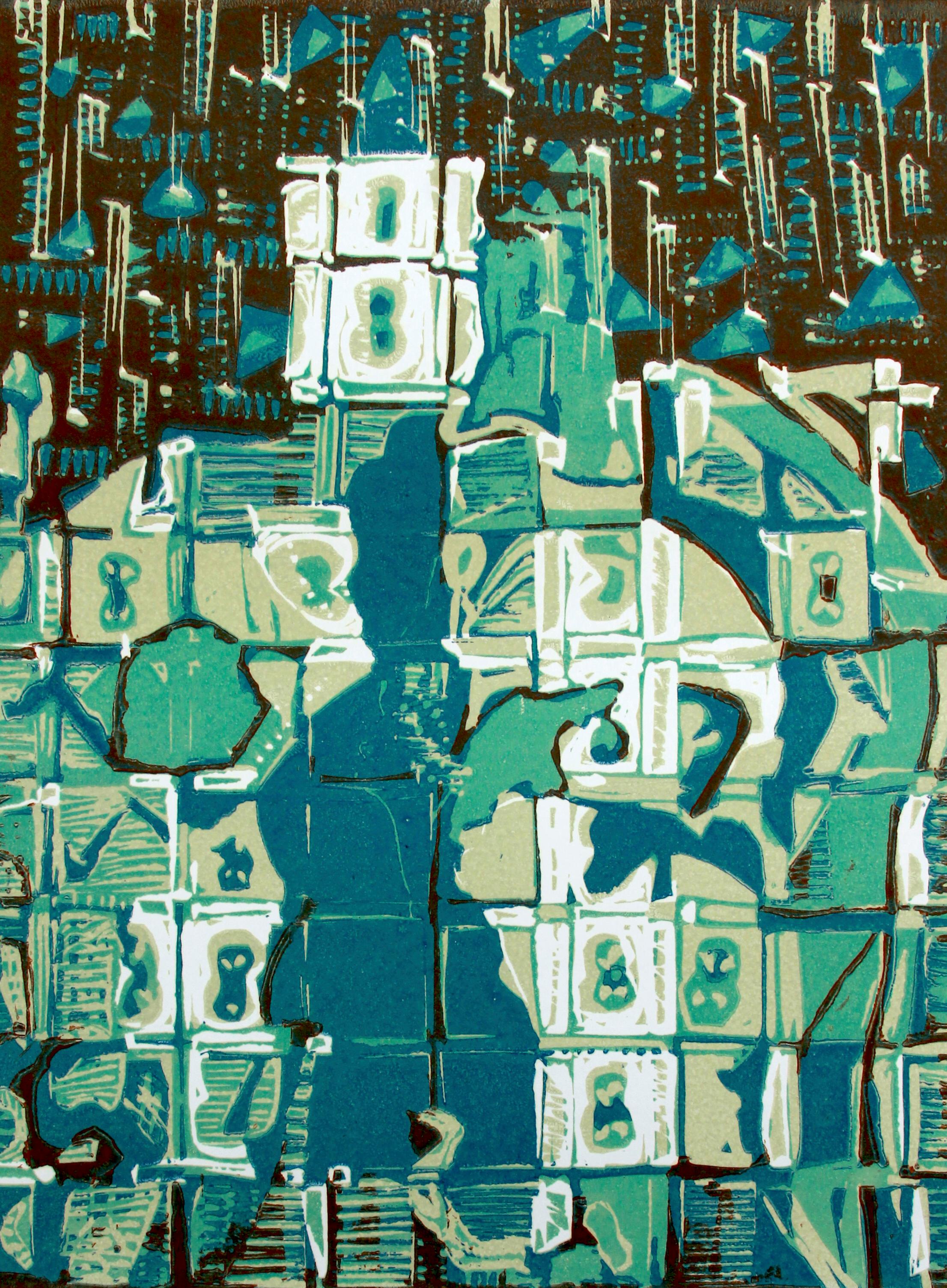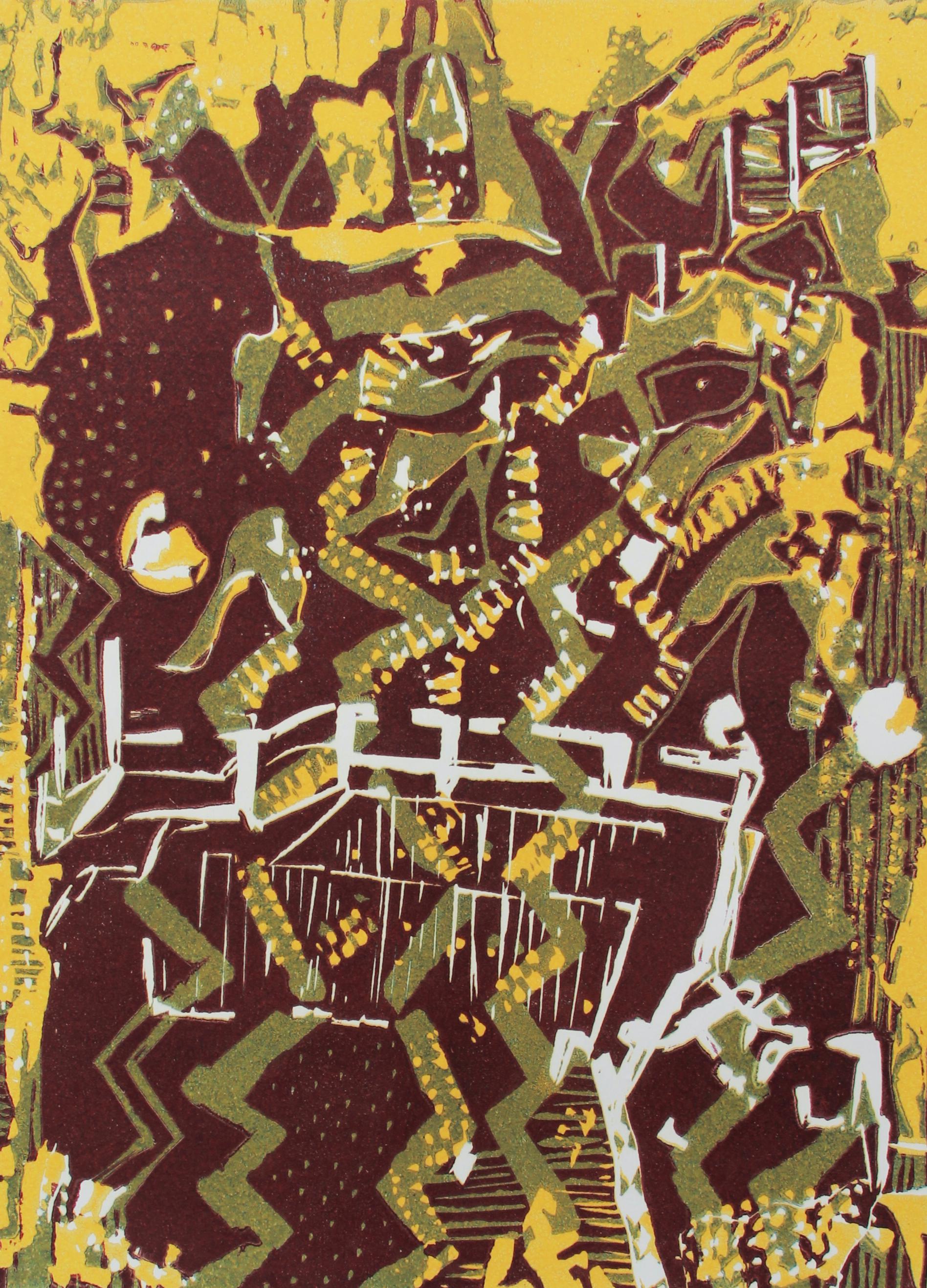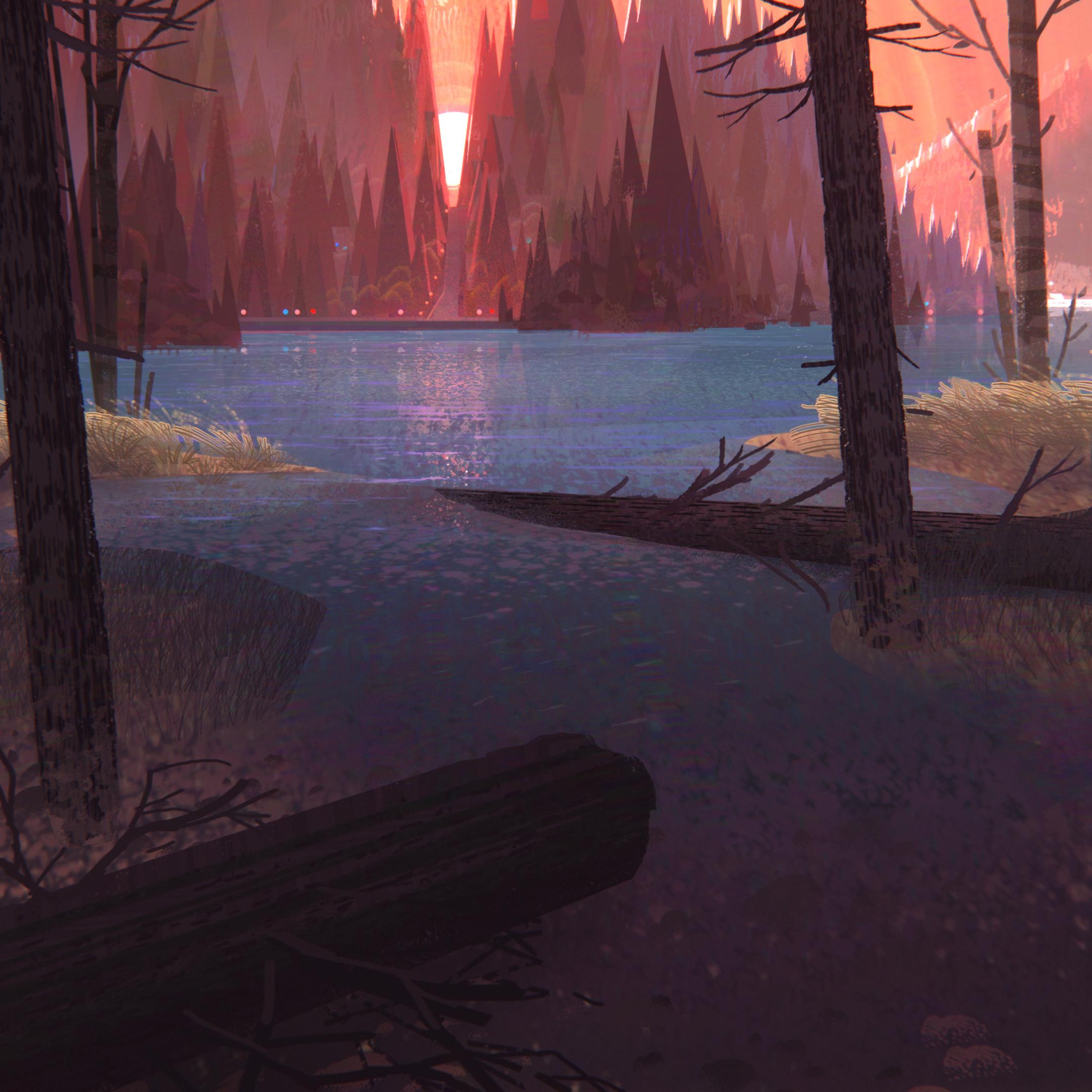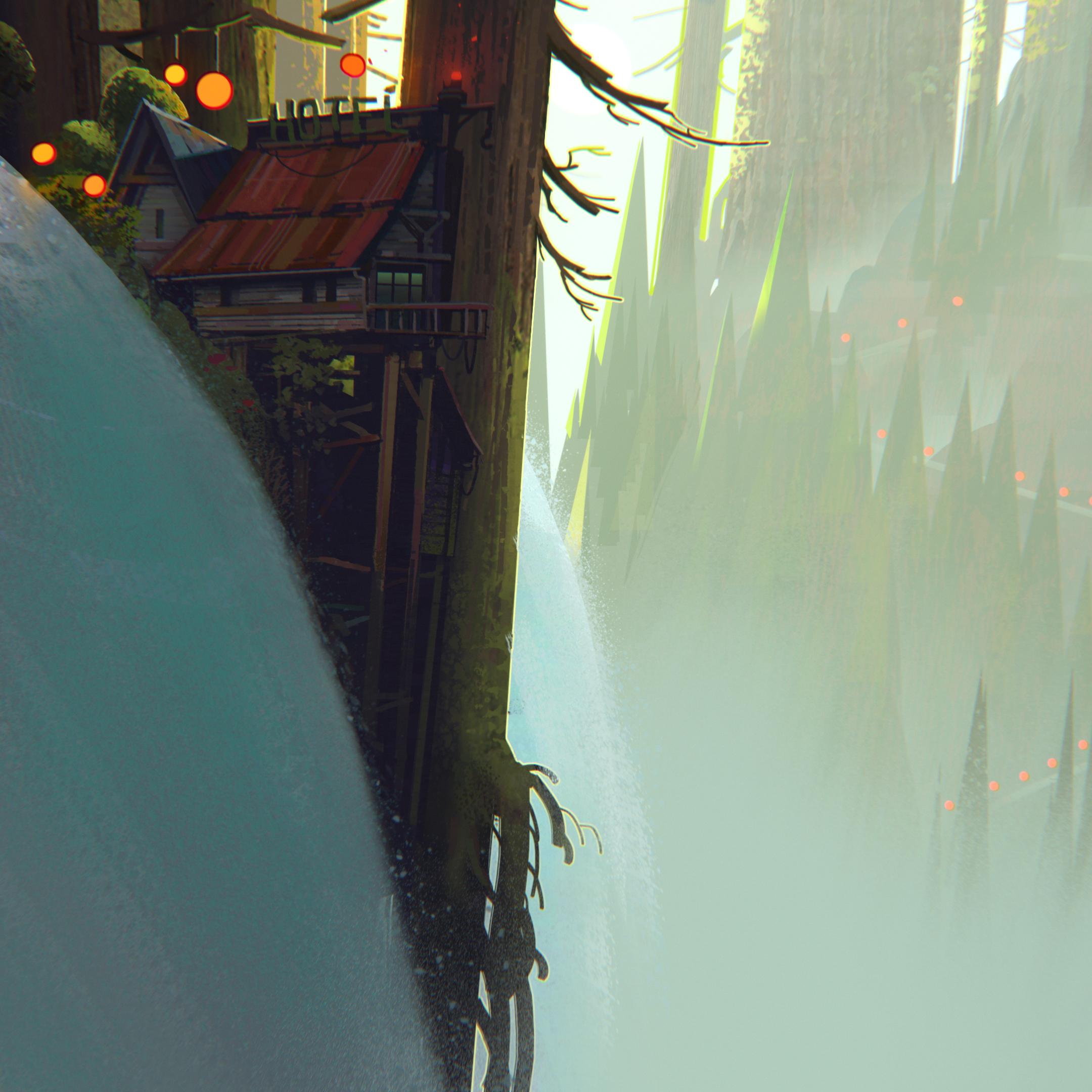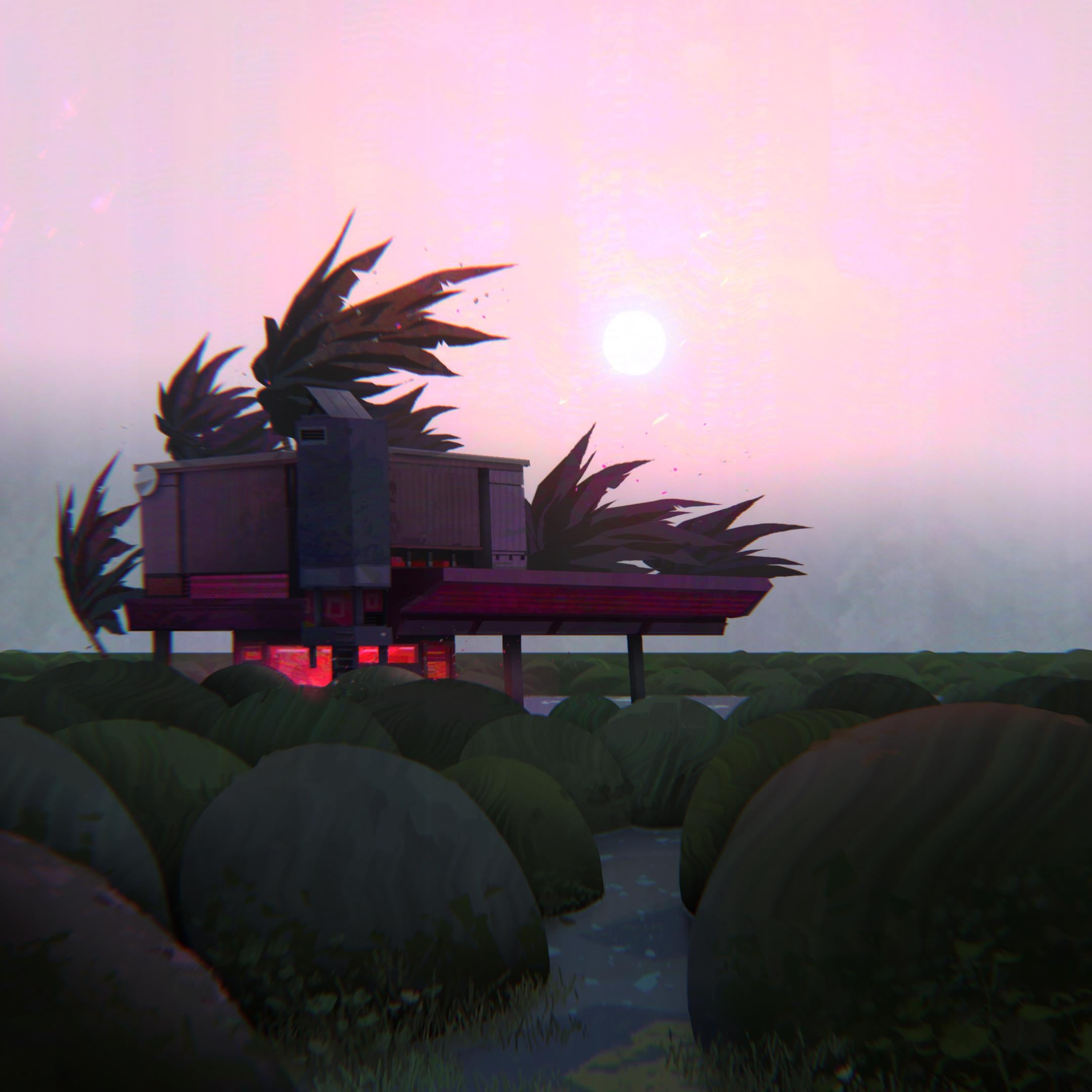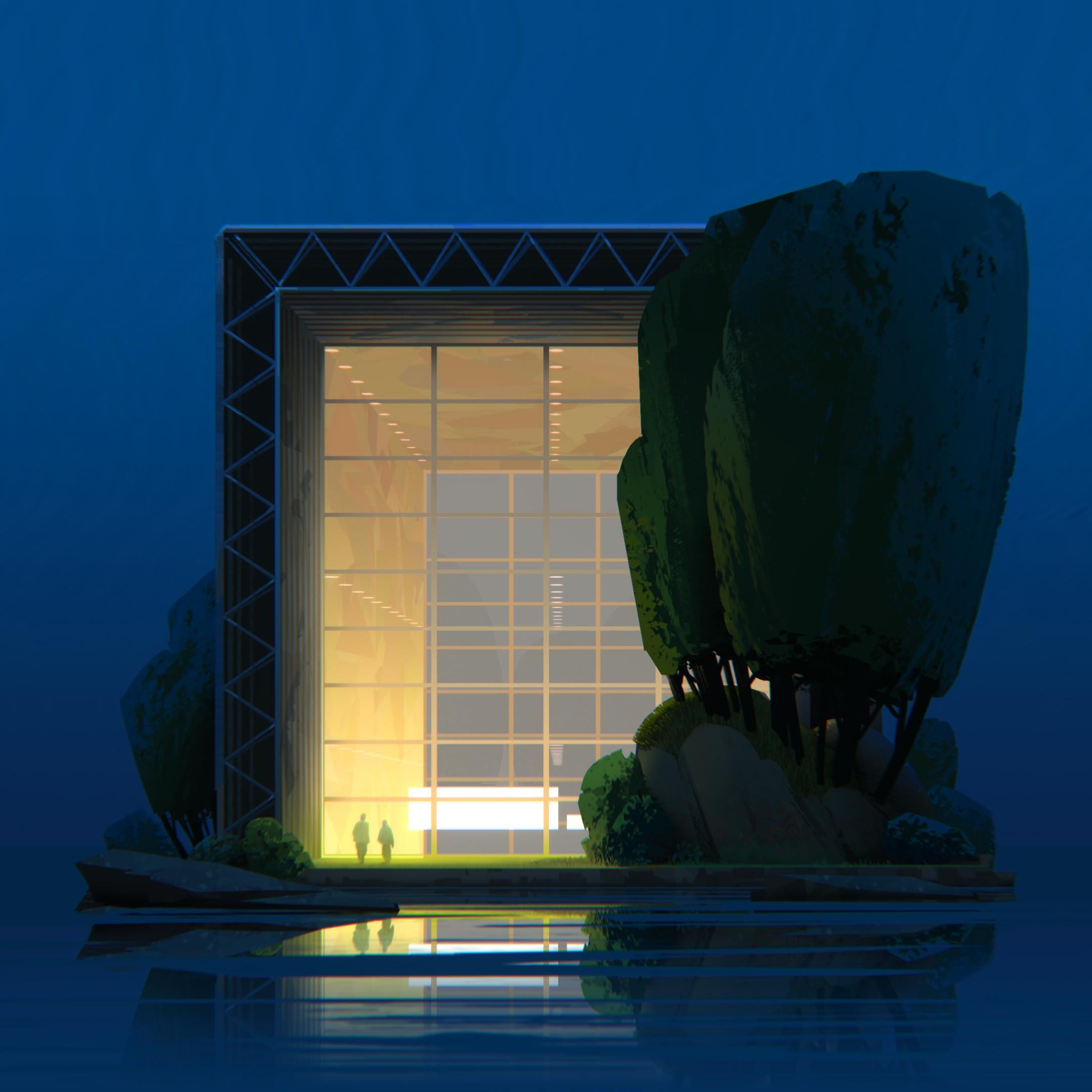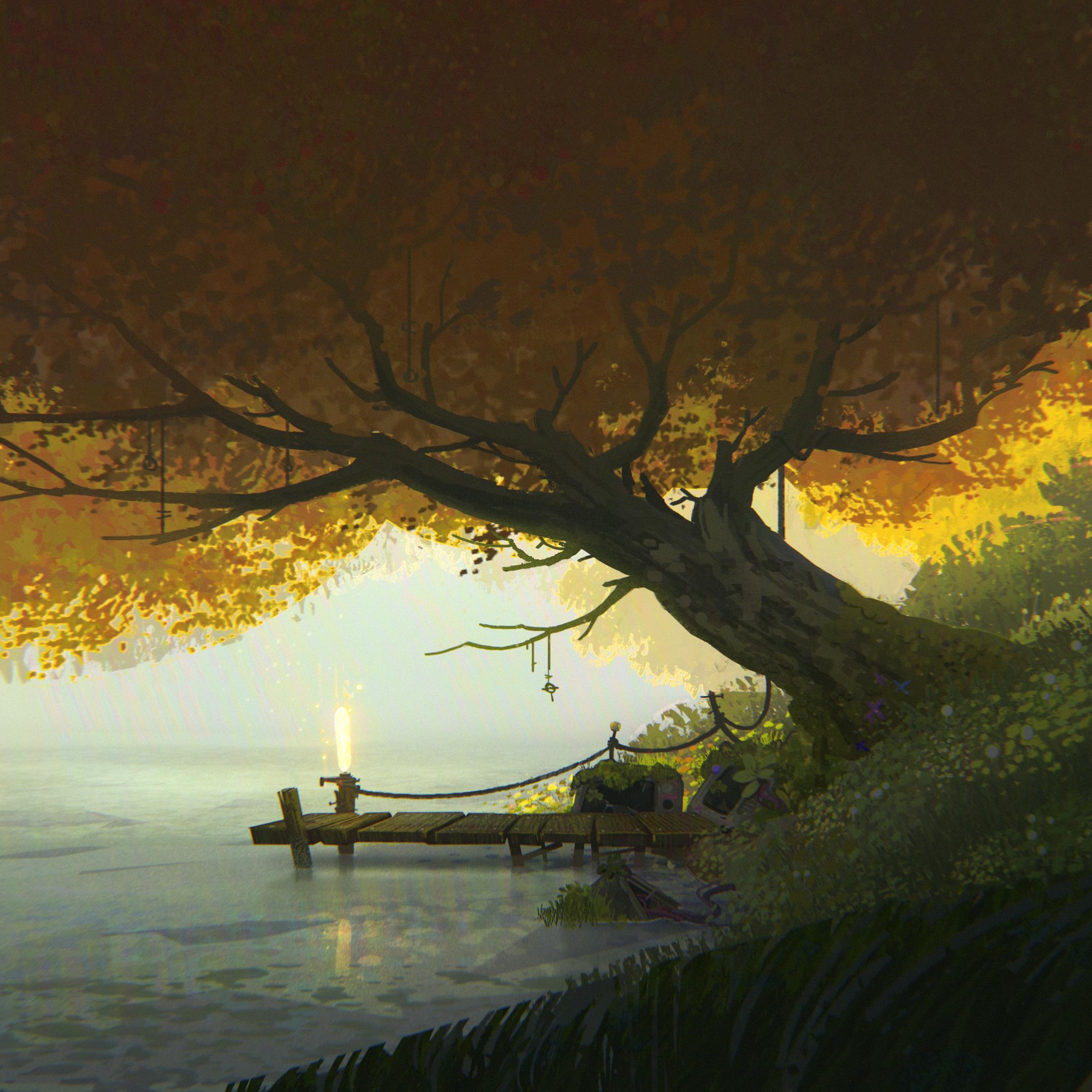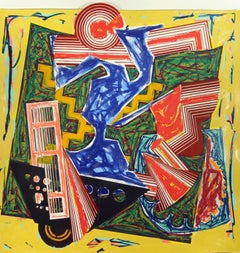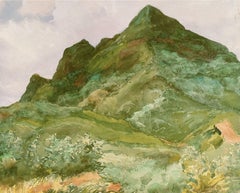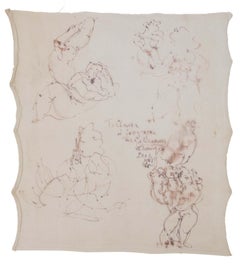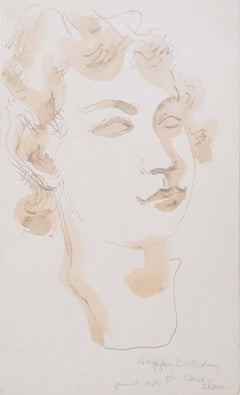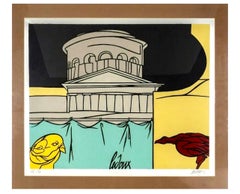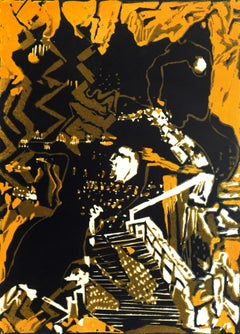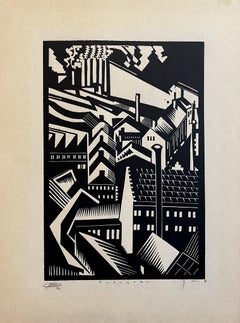
Industry
View Similar Items
Want more images or videos?
Request additional images or videos from the seller
1 of 5
Earl Marshawn WashingtonIndustry1928
1928
Price:$725
$875List Price
About the Item
- Creator:Earl Marshawn Washington (1962, American)
- Creation Year:1928
- Dimensions:Height: 12 in (30.48 cm)Width: 9 in (22.86 cm)
- Medium:
- Movement & Style:
- Period:
- Condition:
- Gallery Location:New York, NY
- Reference Number:1stDibs: LU163728852532
About the Seller
5.0
Vetted Professional Seller
Every seller passes strict standards for authenticity and reliability
Established in 1948
1stDibs seller since 2021
9 sales on 1stDibs
Typical response time: 5 hours
Authenticity Guarantee
In the unlikely event there’s an issue with an item’s authenticity, contact us within 1 year for a full refund. DetailsMoney-Back Guarantee
If your item is not as described, is damaged in transit, or does not arrive, contact us within 7 days for a full refund. Details24-Hour Cancellation
You have a 24-hour grace period in which to reconsider your purchase, with no questions asked.Vetted Professional Sellers
Our world-class sellers must adhere to strict standards for service and quality, maintaining the integrity of our listings.Price-Match Guarantee
If you find that a seller listed the same item for a lower price elsewhere, we’ll match it.Trusted Global Delivery
Our best-in-class carrier network provides specialized shipping options worldwide, including custom delivery.More From This Seller
View AllThen Water Came and Quenched the Fire
By Frank Stella
Located in New York, NY
Frank Stella,
Then Water Came and Quenched the Fire (from Illustrations after El Lissitzky's Had Gadya), 1984
Lithograph, linoleum cut and screenprint in colors with handcoloring and...
Category
Late 20th Century American Modern Abstract Prints
Materials
Paper, Mixed Media
Price Upon Request
New Mexican Mountain Scene
By Joseph Henry Sharp
Located in New York, NY
New Mexico Mountain Scene by Joseph Henry Sharp (1859-1953)
Watercolor on paper
15 ¾ x 19 ½ inches unframed (40.005 x 49.53 cm)
23 x 26 ¾ inches framed...
Category
20th Century Post-Modern Landscape Drawings and Watercolors
Materials
Watercolor
Price Upon Request
Figural Study
By Chaim Gross
Located in New York, NY
Figural Study, ca. 1949-1959, by Chaim Gross (1902-1991)
Ink on fabric
18 x 16 ¼ inches (45.72 x 41.275 cm)
25 x 23 ⅝ inches (63.5 x 60.0075 cm)
Inscribed...
Category
Mid-20th Century Modern Figurative Drawings and Watercolors
Materials
Ink
Price Upon Request
Portrait or Study for a Bust
By Chaim Gross
Located in New York, NY
Portrait or Study for a Bust, 1959 by Chaim Gross (1902-1991)
Ink wash and pencil on paper
8 x 5 inches unframed (20.32 x 12.7 cm)
14 ⅛ x 11 inches framed (35.8775 x 27.94 cm)
Signed...
Category
Mid-20th Century Modern Portrait Drawings and Watercolors
Materials
Ink, Pencil
Price Upon Request
Vitraux in Four Sheets Puzzle of Life by Salvador Dali
By Salvador Dalí
Located in New York, NY
Vitraux in Four Sheets, Puzzle of Life, 1974, by Salvador Dali (1904-1989)
Lithograph on paper
52 ¼ x 55 ½ inches unframed (132.715 x 140.97 cm)
53 ½ x ...
Category
1770s Surrealist More Prints
Materials
Lithograph
Mosque II
By Muhammad Ali
Located in New York, NY
Edition of 500
Hand-signed by artist, Signed and numbered in pencil
Muhammad Ali, the groundbreaking athlete and sociopolitical figure of the twentieth century, is remembered less ...
Category
Late 20th Century American Modern More Prints
Materials
Screen
Price Upon Request
You May Also Like
Italian Post Modern Pop Art Lithograph Silkscreen Valerio Adami Galerie Maeght
By Valerio Adami
Located in Surfside, FL
Titled Ledoux, color limited edition lithograph.
Hand signed by artist in pencil to right hand corner, 101/150 to left.
19.5" X 14" print view area.
This is done in a Postmodernist, Memphis Milano style.
Valerio Adami (born 17 March 1935) is an Italian painter. Educated at the Accademia di Brera in Milan, he has since worked in both London and Paris. His art is influenced by Pop Art.
Adami was born in Bologna. In 1945, at the age of ten, he began to study painting under the instruction of Felice Carena. He was accepted into the Brera Academy (Accademia di Brera) in 1951, and there studied as a draughtsman until 1954 in the studio of Achille Funi. In 1955 he went to Paris, where he met and was influenced by Roberto Matta and Wifredo Lam. His first solo exhibition came in 1959 in Milan.
In his early career, Adami's works were expressionistic, but by the time of his second exhibition in 1964 at Kassel, he had developed a style of painting reminiscent of French cloisonnism, featuring regions of flat color bordered by black lines. Unlike Gauguin, however, Adami's subjects were highly stylized and often presented in fragments.
In the 1970s, Adami began to address politics in his art, and incorporated subject matter such as modern European history, literature, philosophy, and mythology. In 1971, he and his brother Giancarlo created the film Vacances dans le désert. In 1974 he illustrated a Helmut Heissenbuttel poem, Occasional Poem No. 27. Ten Lessons on the Reich with ten original lithographs {Galerie Maeght}. In 1975, the philosopher Jacques Derrida devoted a long essay, "+R: Into the Bargain", to Adami's work, using an exhibition of Adami's drawings as a pretext to discuss the function of "the letter and the proper name in painting", with reference to "narration, technical reproduction, ideology, the phoneme, the biographeme, and politics". The Galerie Maeght is a gallery of modern art in Paris, France, and Barcelona, Catalonia, Spain. The gallery was founded in 1936 in Cannes. The Paris gallery was started in 1946 by Aimé Maeght. The artists exhibited are mainly from France and Spain. Since 1945, the gallery has presented the greatest modern artists such as Matisse, Bonnard, Braque, Miró, and Calder. In 1956, Adrien Maeght opened a new parisian venue. The second generation of “Maeght” artists was born: Bazaine, Andre Derain, Giacometti, Kelly, Raoul Ubac, then Riopelle, Antoni Tapies, Pol Bury and Adami, among others. There were four retrospective exhibits of Adami's work between 1985 and 1998. They were held in Paris, the Centre Julio-Gonzalez de Valence (Spain), Tel Aviv, and Buenos Aires. In 2010, the Boca Raton Museum of Art devoted a special exhibit to Adami's Post Modern paintings and drawings.
Derriere le Miroir, the editor was Aimé Maeght. Derrière le Miroir is a French art magazine created in 1946 and published until 1982...
Category
1980s Post-Modern Landscape Prints
Materials
Lithograph
Landscape. 1983, paper, ink, 27x19 cm
Located in Riga, LV
Landscape. 1983, paper, ink, 27x19 cm
Dzidra Ezergaile (1926-2013)
Born in Riga. School years alternate with summer work in the countryside. In 1947,...
Category
1980s Abstract Landscape Prints
Materials
Paper, Ink
A River Runs Through It - Soody Sharifi, Inkjet Print, Middle Eastern Artist
By Soody Sharifi
Located in Houston, TX
Soody Sharifi, Archival Inkjet Print, Middle Eastern Artist. Framed artwork in excellent condition. Edition of 3. Signed and numbered by artist on verso.
Category
Early 2000s Abstract Prints
Materials
Archival Ink, Satin Paper
Abstract Landscape Indian Art Edition 3/5 Linocut Print Nature Orange Australia
By Mukesh Sharma
Located in Norfolk, GB
There is a natural and raw understanding in Mukesh Sharma’s prints that both depict, and are influenced by, the Rajastani communities of his home town in rural India. In these Limited Edition fine-art prints, made over a period of twenty years, we are offered the colours of India’s ancient land, the textures, light and the patterns that are everywhere. In the patterns of the arable fields to the jali's (carved screens) in the architecture. This work is however not romantic nor nostalgic but shows a deeper rooted need to offer a visual heritage of place, of where the artist is from and the journey that he is taking. The results are both compelling and honest.
Mukesh Sharma, Jetty 1, Lino-cut chin- coll’e on German Ivory paper
Edition: 3 of 5, 2005
Image size: 50 x 33 cm / Sheet size: 79 x 55 cm
Unframed
''What mesmerised me was the meeting of the sea and the mountain peak. Where the Jetty, a special curved wooden staircase leading to one end and the deep crystal clear sea at a distance. These scenes were amazing to me."
Mukesh Sharma's work:
It is often in childhood that paths are set for what we will become. Mukesh Sharma hails from a rural, agricultural village in Rajasthan, India. His Father is a craftsman who fixed and mended farm machinery and understood the working parts in the processes. Sharma followed in his Father’s footsteps, as is often the case in Indian families, but his was not the machines of the fields but the presses of the printing studio.
Like his Father, Mukesh Sharma is fascinated with understanding how things work and how he can manipulate the metal in his hands. It is not surprising then that his medium of choice is printing. One of the most physically challenging of all the practices, it can often be physically challenging as well as technical and detailed.
In his youth, Sharma would draw with stones on walls and floors. He was lucky his family encouraged this and he is grateful for his early art-training at the Jaipur School of Art but it was at the Baroda Art Department that he was introduced to the great printing traditions of Jyoti Bhatt...
Category
Early 2000s Abstract Abstract Prints
Materials
Archival Ink, Archival Paper, Linocut, Archival Pigment
Abstract India Edition 3/5 Linocut Print Green Blue Turquoise Architectural
By Mukesh Sharma
Located in Norfolk, GB
There is a natural and raw understanding in Mukesh Sharma’s prints that both depict, and are influenced by, the Rajastani communities of his home town in rural India. In these Limited Edition fine-art prints, made over a period of twenty years, we are offered the colours of India’s ancient land, the textures, light and the patterns that are everywhere. In the patterns of the arable fields to the jali's (carved screens) in the architecture. This work is however not romantic nor nostalgic but shows a deeper rooted need to offer a visual heritage of place, of where the artist is from and the journey that he is taking. The results are both compelling and honest.
Mukesh Sharma, Celebration B, Lino-cut on Drawing paper
Edition: 3 of 5, 2005
Image size: 47 x 39 cm / Sheet size: 79 x 55 cm
Unframed
Mukesh Sharma's work:
It is often in childhood that paths are set for what we will become. Mukesh Sharma hails from a rural, agricultural village in Rajasthan, India. His Father is a craftsman who fixed and mended farm machinery and understood the working parts in the processes. Sharma followed in his Father’s footsteps, as is often the case in Indian families, but his was not the machines of the fields but the presses of the printing studio.
Like his Father, Mukesh Sharma is fascinated with understanding how things work and how he can manipulate the metal in his hands. It is not surprising then that his medium of choice is printing. One of the most physically challenging of all the practices, it can often be physically challenging as well as technical and detailed.
In his youth, Sharma would draw with stones on walls and floors. He was lucky his family encouraged this and he is grateful for his early art-training at the Jaipur School of Art but it was at the Baroda Art Department that he was introduced to the great printing traditions of Jyoti Bhatt...
Category
Early 2000s Abstract Abstract Prints
Materials
Archival Ink, Archival Paper, Linocut, Archival Pigment
Abstract India Edition 3/5 Linocut Print Nature Sea Jetty Yellow Green Australia
By Mukesh Sharma
Located in Norfolk, GB
There is a natural and raw understanding in Mukesh Sharma’s prints that both depict, and are influenced by, the Rajastani communities of his home town in rural India. In these Limited Edition fine-art prints, made over a period of twenty years, we are offered the colours of India’s ancient land, the textures, light and the patterns that are everywhere. In the patterns of the arable fields to the jali's (carved screens) in the architecture. This work is however not romantic nor nostalgic but shows a deeper rooted need to offer a visual heritage of place, of where the artist is from and the journey that he is taking. The results are both compelling and honest.
Mukesh Sharma, Jetty 2, Lino-cut on German Ivory paper
Edition: 3 of 5, 2005
Image size: 47 x 39 cm / Sheet size: 79 x 55 cm
Unframed
'What mesmerised me was the meeting of the sea and the mountain peak. Where the Jetty, a special curved wooden staircase leading to one end and the deep crystal clear sea at a distance. These scenes were amazing to me.'
Mukesh Sharma's work:
It is often in childhood that paths are set for what we will become. Mukesh Sharma hails from a rural, agricultural village in Rajasthan, India. His Father is a craftsman who fixed and mended farm machinery and understood the working parts in the processes. Sharma followed in his Father’s footsteps, as is often the case in Indian families, but his was not the machines of the fields but the presses of the printing studio.
Like his Father, Mukesh Sharma is fascinated with understanding how things work and how he can manipulate the metal in his hands. It is not surprising then that his medium of choice is printing. One of the most physically challenging of all the practices, it can often be physically challenging as well as technical and detailed.
In his youth, Sharma would draw with stones on walls and floors. He was lucky his family encouraged this and he is grateful for his early art-training at the Jaipur School of Art but it was at the Baroda Art Department that he was introduced to the great printing traditions of Jyoti Bhatt...
Category
Early 2000s Abstract Abstract Prints
Materials
Archival Ink, Archival Paper, Linocut, Archival Pigment
